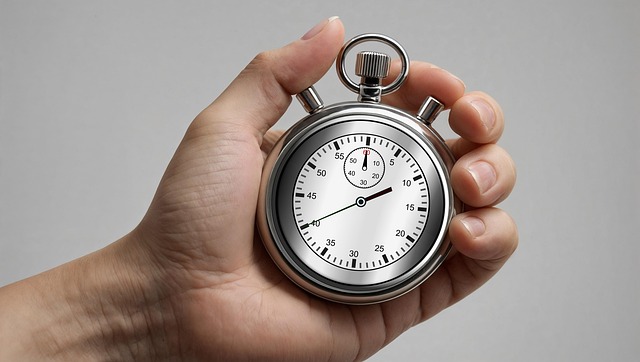5S training, grounded in lean management principles, transforms cluttered workplaces into efficient environments through sorting, setting in order, cleaning, standardizing, and sustaining. This methodology enhances organization, promotes safety, and drives continuous improvement via process standardization, ultimately boosting productivity and employee morale. By implementing 5S continuous improvement, companies achieve streamlined operations, cost savings, error reduction, and enhanced workplace safety.
“Unleash the power of systematic workplace maintenance and transform your business operations! Discover the secrets to creating an efficient and organized work environment. From the foundational principles of 5S Training, which streamlines spaces, to adopting Lean Management for streamlined workflows, this article covers it all. Explore effective organization techniques and understand how continuous improvement through standardized processes can drive long-term success. Boost productivity and minimize waste with these proven strategies.”
- Understanding 5S Training: A Foundation for Workplace Efficiency
- Lean Management Principles: Streamlining Workflows and Reducing Waste
- Workplace Organization Techniques: Creating Productive Environments
- Continuous Improvement through Standardized Processes: Long-Term Benefits
Understanding 5S Training: A Foundation for Workplace Efficiency

Understanding 5S Training is fundamental to establishing a culture of efficiency and productivity in any workplace. This comprehensive training methodology, rooted in lean management principles, focuses on transforming cluttered and disorganized spaces into streamlined, optimized environments. By implementing the 5S framework—Sort, Set in Order, Shine (Clean), Standardize, and Sustain—workplaces can achieve remarkable levels of organization and continuous improvement.
The process begins with sorting, where unnecessary items are discarded or stored appropriately. This step sets the stage for setting things in order, ensuring each tool, piece of equipment, and material has its designated place. Regular cleaning and maintenance, represented by the ‘Shine’ phase, promote a safe, healthy environment. Standardization, the fourth pillar, involves establishing consistent processes and procedures to maintain order. Finally, sustainability is key; 5S training encourages ongoing practice and adaptation to ensure the organized workplace is maintained over time.
Lean Management Principles: Streamlining Workflows and Reducing Waste

Lean Management Principles play a pivotal role in systematic workplace maintenance by focusing on streamlining workflows and reducing waste. At the core of this approach lies the 5S training methodology, which involves sorting (seiri), setting in order (seiton), shining (seiso), standardizing (seiketsu), and sustaining (shitsuke). Implementing these principles enhances workplace organization, ensuring every tool and resource has its designated place, thereby minimizing time-wasting activities.
The lean management philosophy emphasizes process standardization to eliminate non-value-added steps in processes. By fostering a culture of continuous improvement, workers are encouraged to identify inefficiencies and suggest enhancements. This not only improves productivity but also contributes to a safer, more organized work environment where every action aligns with the ultimate goal of maximizing value for customers and minimizing waste.
Workplace Organization Techniques: Creating Productive Environments

In today’s competitive business landscape, efficient and organized workplaces are key to enhancing productivity and fostering a positive work environment. Implementing effective workplace organization techniques, such as 5S training and lean management principles, plays a pivotal role in achieving this goal. The 5S methodology—Sort, Set in Order, Shine, Standardize, Sustain—serves as a powerful tool for process standardization, enabling employees to maintain an organized workspace that reduces waste and streamlines operations.
By integrating these practices into daily routines through continuous improvement initiatives, organizations can create an environment conducive to focus and collaboration. Lean management principles, which emphasize the elimination of non-value-added activities, further enhance productivity by ensuring every process is optimized and standardized. This holistic approach not only improves workflow efficiency but also cultivates a culture of order and discipline, ultimately contributing to a more productive, engaged, and satisfied workforce.
Continuous Improvement through Standardized Processes: Long-Term Benefits

Continuous improvement is a key aspect of systematic workplace maintenance, and it’s heavily fueled by standardized processes. Implementing 5S training, a principle rooted in lean management, can significantly transform a workspace. This involves sorting, setting in order, shining (cleaning), standardizing, and sustaining—a system that promotes workplace organization and efficiency. By training employees in these methods, companies create an environment where every task is executed with precision and minimal waste, leading to increased productivity.
The long-term benefits of 5S continuous improvement extend beyond immediate cost savings and reduced downtime. Standardized processes enhance employee morale by providing clarity and purpose in their roles, fostering a culture of quality and excellence. Furthermore, they ensure that best practices are consistently applied, reducing errors and improving overall workplace safety. This systematic approach to maintenance not only guarantees optimal operational efficiency but also paves the way for future growth and adaptability.
